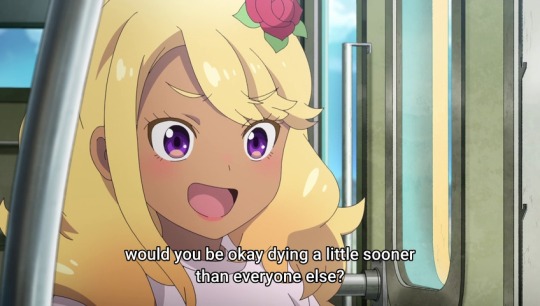Note
why did you choose fus7a over MSA? or for that matter why fus7a at all vs a dialect (nor judging just curious and interested)
I am using fus7a here to refer to both MSA and Classical Arabic, as they are different historical periods of the same language that in large part differ only in rhetorical style, but I am also learning Levantine Arabic as my main dialect to actually speak
0 notes
Text


support vital community work in Gaza, support Gaza municipality
211 notes
·
View notes
Photo

7K notes
·
View notes
Text
"In February, four months after Hamas broke through the fence around the Gaza Strip, Israel’s military establishment secretly employed hundreds of Palestinian workers from the West Bank to repair it. The incident represented one of the only times that Palestinian workers have been allowed to return to work within the Green Line after the Israeli government revoked almost all of their work permits in October.
The Israeli military establishment’s decision to rehire previously-banned Palestinian workers, which bypassed elected lawmakers on the official Security Cabinet, represents a growing tension between Israeli leaders’ divergent approaches to Palestinian laborers.
(...)
In the post-October 7th moment, Israeli leaders are retracing this familiar debate about Palestinian labor, but the rise of the far right has meant that the exclusion pole is much more powerful than in previous iterations. According to Hussain, a 60-year-old Palestinian laborer and West Bank resident who worked in construction near Tel Aviv before October 7th, Israel’s cancellation of almost all work permits has created one of the most dire crises Palestinian workers have ever faced. “The situation was never this bad even during the First or Second Intifada,” Hussain told Jewish Currents, asking that only his first name be used to protect his job prospects. “I have a family of seven and I haven’t worked in five months. I haven’t been able to buy meat since October 7th. We are relying on Allah and no one else.”
(...)
In the first two decades after it occupied the West Bank and Gaza Strip in 1967, Israel opted to integrate a Palestinian labor force in the hopes that ensuring a basic level of welfare for Palestinians would maintain calm. But Israel changed tack with the onset of the First Intifada, the late 1980s Palestinian uprising against the occupation. In that period, Israel’s repeated closures of the West Bank and Gaza Strip, which intensified following a wave of Palestinian militant attacks, barred tens of thousands of Palestinians from reaching their workplaces. This created a crisis for employers in the construction sector, where the dependency on Palestinians was most acute, and since Israeli workers were unwilling to work in these hazardous jobs—which also became socially stigmatized due their association with Palestinians—the government had no option left but to bring in workers from elsewhere. As a result, by 1996, the Israeli government had granted 106,000 permits for foreign migrant workers.
The shift to supposedly pliant and depoliticized foreign labor was seen as not only a way to keep the Israeli economy going, but also a strategy to quash the Intifada, which leveraged Israel’s dependency on Palestinian workers to put forward political demands through frequent strikes. “When the working Palestinian population rose up and threatened the interests of the state and employers, migrant workers were brought in as a sort of strike-breaker population,” said activist and anthropologist Matan Kaminer, who researches migrant workers in Israel. Bringing in a non-Palestinian labor force was also seen as preparation for an imminent two-state agreement: “The Oslo years also represented the most significant attempt to wean Israel off Palestinian labor because the government genuinely believed that there would be political separation,” Preminger said.
For right-wing Israelis, however, the potential replacement of Palestinian labor with foreigners triggered other latent anxieties. “The Israeli right was worried about foreign workers because if they were given rights and equality as non-Jews, it could create a liberal society where the first and most important marker is not the fact that you’re Jewish,” said Yael Berda, an academic who studies Israel’s permit regime. Preminger echoed this point: “In Israel, there is a constant negotiation between the inclusionary economic pressure to hire cheap or otherwise exploitable labor, and the exclusionary political pressure of an ethnonationalism that doesn’t want any non-Jews.” To manage this tension, Israel restricted the rights of its new migrant labor force. Even as more than 100,000 foreign workers were brought to Israel by the turn of the millennium, they were not allowed to bring their families. Most came on five-year visas, which gave a clear terminus to their lives in Israel, and there was no route to naturalization. Guaranteeing that migrants’ time in Israel would be finite “ensured that the costs of social reproduction—care of children and the elderly, long-term medical treatment, and so on—were not borne by Israeli society,” Kaminer said, adding that “all these draconian measures were designed very explicitly to ensure that migrant workers don’t become a permanent non-Jewish population.”
Despite these measures, Israeli leaders remained concerned that this population would naturalize, a problem they didn’t have with Palestinian workers. “One of the main advantages [of Palestinian labor] is that Palestinians are part of the economy without being part of the polity, which means you can extract labor without paying the social and political cost of their belonging. At the end of the day, they return to their homes,” said Berda. These concerns, alongside the economic and security benefits Israel enjoyed by hiring subordinated Palestinian workers, eventually led to their return.
For their part, Israeli employers welcomed this shift because, in Preminger’s words, “Palestinians were familiar with the land and the language, and they knew how to do the work, and how to work with Israelis.” Israel also benefited in other ways: As opposed to foreign workers, who send remittances back to their home countries, “Palestinian workers live in a captive market, and all their money ultimately ends up getting recycled into the Israeli economy,” said Abed Dari, a field coordinator with the workers’ rights NGO Kav LaOved. Leila Farsakh, a Palestinian political economist, explained that Israel’s decision to employ Palestinians further consolidated the de-development of the occupied territories, with labor migration to Israel—which accounted for up to one third of the Palestinian workforce during the ’90s—decimating smaller industries in the West Bank and the Gaza Strip. The higher salaries Palestinian workers were offered in Israel also contributed to pulling them out of agricultural work, facilitating Israel’s land confiscations. “Palestinian labor migration has played a key role in binding and subordinating the Palestinian economy to Israel,” Farsakh explained.
Even more crucially, labor migration became a central pillar in Israel’s regime of control over Palestinians, especially once Israel established its extensive system of work permits in the 1990s and set up a network of checkpoints with which to surveil Palestinian labor after the Second Intifada broke out in 2000. As Berda argued in her book, Living Emergency: Israel’s Permit Regime in the Occupied West Bank, the permit regime constitutes “one of the most highly developed systems of control over a civilian population anywhere in the world.” Since a permit can be denied or revoked if the applicant is found to have engaged in any political activity—even peaceful protest—the system has served as a successful deterrent against individual Palestinians’ political participation. The broader closure policy in response to Palestinian uprisings also offered a collective deterrent, what Berda termed “an instrument for managing the political conflict in the labor market.” Following the Second Intifada, Israel also expanded the category of “security threat,” which led the number of Palestinians blacklisted from receiving movement permits to grow from only a few thousand before the Second Intifada to one-fifth of the male Palestinian population by 2007. Those who were denied permits sometimes became Israeli collaborators, which caused widespread suspicion and frayed social bonds within the occupied West Bank—as did the emergence of a class of Palestinian brokers invested in facilitating and managing Israel’s labor regime. These dynamics have continued into the present: As Farsakh noted, “the fact that the West Bank didn’t explode after October 7th is a testament to the success of this pacification policy.”
(...)
In this context, far-right politicians’ hardline rhetoric against Palestinians, and their insistence on bringing in foreign labor, seem likely to result not in a replacement of Palestinian workers but in “a new security regime for managing them,” according to Farsakh. Berda concurred, adding that “the influx of migrant workers will give Israel even more leverage over Palestinian workers, which will mean worse working conditions and more surveillance.” Indeed, the military establishment’s recently proposed pilot for a partial reentry of Palestinian workers explicitly suggests the use of “advanced monitoring systems that have never been used before” as a way to address the far right’s concerns about Palestinian militancy. In crafting this harsher version of the previous system, Israel looks poised to draw from the precedent of both the Intifadas, bringing in a migrant labor population to depress Palestinians’ power as it did in the ’90s while also heightening surveillance on Palestinian workers as in the 2000s. For the Palestinian workers on their receiving end, these emergent re-entry policies constitute a bitter lifeline, offering a short-term improvement on months of unemployment, but a long-term erosion of their already precarious rights."
36 notes
·
View notes
Text
artists fuck better because we turn sex into art, masterpieces, mattresses become canvases where we can paint our love to someone with bodies.
597K notes
·
View notes
Text
I feel like when you're learning fus7a an important thing to keep in mind is like.... you don't really need to be able to speak it. Like, there's probably not going to be a situation in your life unless you move to the middle east and pursue a political office where you'll be called upon to speak extemporaneously in fus7a pretty much ever. I feel like when you're learning and practicing it you just need to keep in mind that it's what all colloquial varieties draw from and many of the grammatical patterns are simplifications of it, but ultimately you mostly just should be able ideally to read it and maybe understand it spoken, it's not something you need to worry that bad about
8 notes
·
View notes
Text

saw this video in the comment section of the sora no woto ost track I posted and I think this is actually why I'm such an evangelist for it, while on the surface not being a timeless masterpiece it is a work of art that your heart will never forget. Even if you forget every single aspect of the plot and the names of the characters you'll never forget how it made you feel the first time you watched it (it is like Sousou no Frieren in this way imo) it's only 13 episodes, so watch it!
7 notes
·
View notes
Text
youtube
I said watch skrs, and that's true but actually first if you wanna watch an anime with an all female cast watch sora no woto, it is entry #1 in the Essential Anomie Collection for a reason and it is my favorite anime of all time for a reason
2 notes
·
View notes
Text
Yoko Kanno & Arnór Dan | Von
from Zankyou No Terror
7 notes
·
View notes
Text
1K notes
·
View notes
Text
youtube
haven't seen this cross my dash yet but uhhh yall seein this???
5 notes
·
View notes







